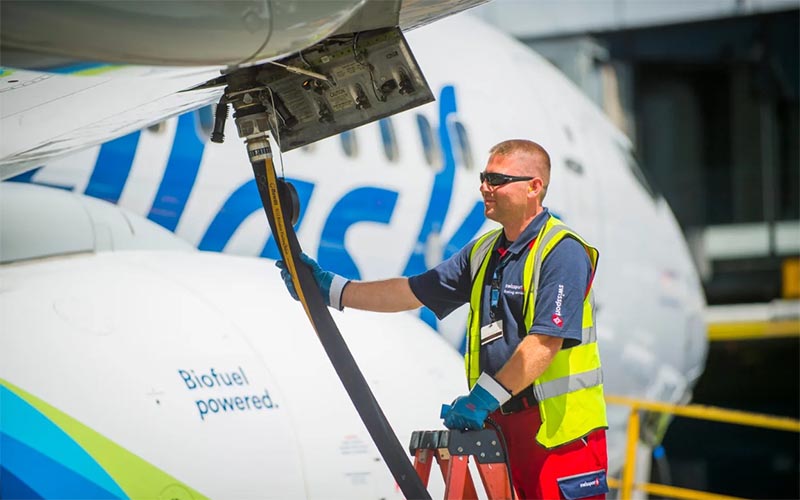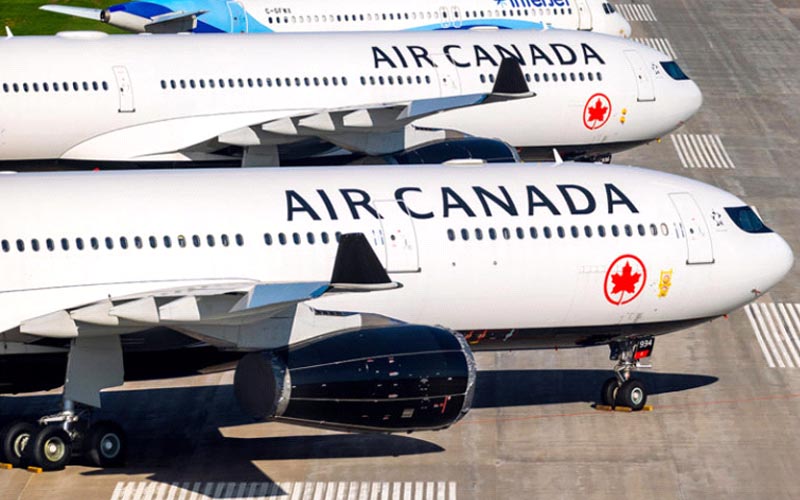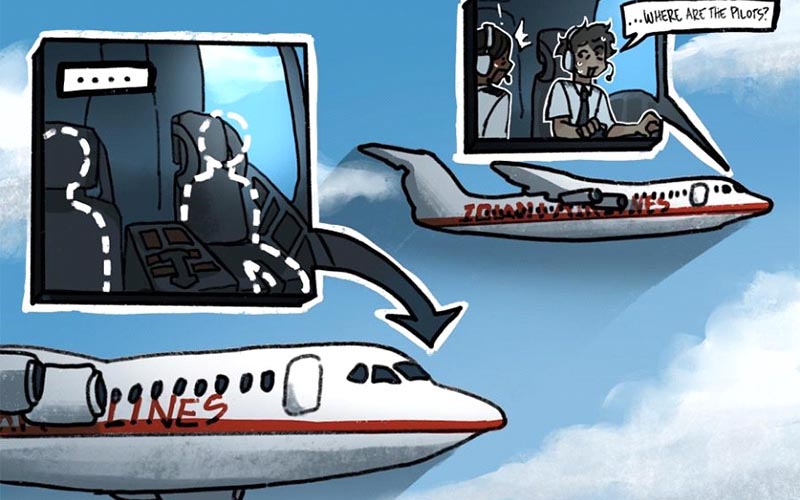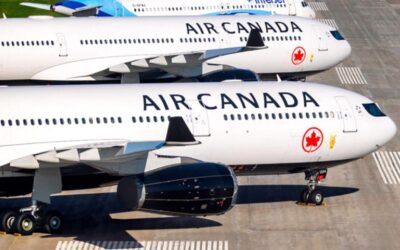Our experts describe the current advancements and developments in aircraft technology that can be realized relatively soon in the aviation sector. A full overhaul of the propulsion technology is required for alternative options, such as hydrogen, and as a result, they are most likely to occur in the distant future. Despite this, we believe that they are necessary for a sustainable solution for future aircraft.
•Read the first installment of this blog series, which focuses on modelling and simulating fuel savings and expanded flying range powered by hybrid electric propulsion systems.
This blog covers a variety of aircraft-related technology and developments, including:
Alternative fuels: • Ultra-High Bypass Ratio Geared Turbofan Concepts for partially electric (“hybrid”) propulsion and sustainable aviation fuel (SAF).
Why Less Radical Aerospace Advances Are Insufficient?
Engineers are working to quickly create solutions that will enable more environmentally friendly aircraft. This is due to the fact that despite the aviation sector’s impressive fuel burn reductions over the last few decades, demand for air travel has continued to grow. We concentrated on enhancing fuel efficiency and flying range using hybrid electric propulsion systems in the first blog post of this series. Similar to this illustration, more innovative aircraft solutions are needed to contribute to the savings. Let’s think about how the mass of carbon dioxide produced every revenue passenger kilometre may be used to gauge aviation efficiency. Figure 1 below illustrates this trend over the past 60 years.
From 109,000 commercial passenger kilometres in 1960 to 8.257.000 million revenue passenger kilometres in 2018, the utilization of aviation has expanded by a factor of 76 over the same time period. Data indicates that despite the current epidemic, airplane emissions have continued to climb. It is imperative that the aviation sector achieve carbon neutrality by the year 2050 as a result.
The so-called aero engine, the propulsion system, and the power sub-system of the aircraft are being equipped with a number of potential technologies in the near future. They include designs for partly electric (“hybrid”) propulsion, Sustainable Aviation Fuel (SAF), and geared turbofans with an ultra-high bypass ratio.
On-going Trends
Let’s take a closer look at each of these modern trends and advancements in the aviation technology that are now being made.
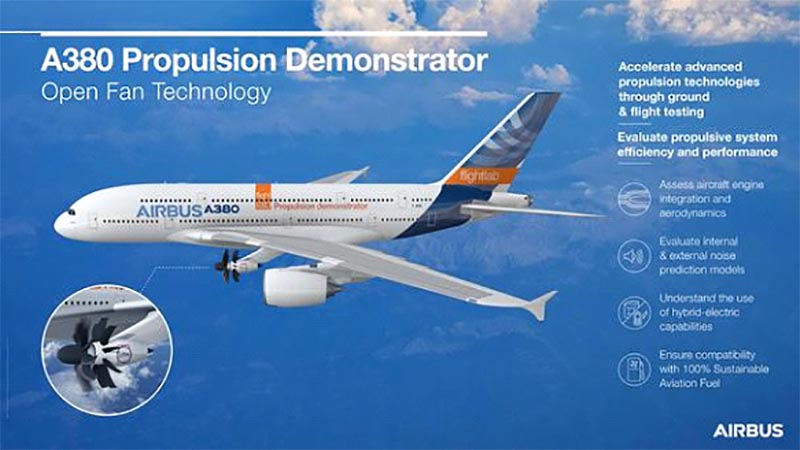
Turbofan with a very high bypass ratio
The present generation of ultra-high bypass ratio geared turbofans is among the first group of technologies in the aviation industry’s pipeline that promise modest improvements. They boost the turbofan’s internal pressure and blade diameter. For the geared turbofan improvements, we may consider the following two categories of efficiency:
Propulsive efficiency describes how effectively intermediate mechanical power is converted into propulsive power moving the aircraft (e.g., the useful output power), while thermal efficiency describes how effectively input power supplied to the engine (via a fuel flow or other heat source) is converted into intermediate mechanical power.
Compressor materials are the only thing preventing advancements in thermal efficiency. Increasing the total pressure ratio, which also boosts the compressor outlet temperature, is the main factor in improving thermal efficiency. Due to the quick rotation and huge mechanical stresses, compressor rotor materials may find it difficult to withstand ever-increasing outlet temperatures. The decrease in compressor cross-sectional area and shorter last-stage compressor blades are both results of the increased overall pressure ratio. Since gaps cannot be unilaterally closed, last-stage losses rise relative to gaps. Similar to how greater overall pressure ratios increase thermal efficiency, higher turbine intake temperatures result, creating difficulties with turbine cooling.
Additionally, greater temperatures might result in a rise in the alarming pollutant nitrogen oxide generation in the combustor. The sum of the thermal and propulsive efficiencies is the overall efficiency, and the latter is constrained by the weight, drag, and maybe transmission efficiency of the nacelle. Distributed propulsion or unducted fan ideas may be required.
Sustainable Aviation Fuel (SAF)
Additionally, higher temperatures may cause the combustor to produce more nitrogen oxide, an extremely dangerous pollutant. The total efficiency is the sum of the thermal and propulsive efficiencies, and the latter is limited by the weight, drag, and perhaps transmission efficiency of the nacelle. It could be necessary to use distributed propulsion or unducted fan designs.
Concepts for Partially Electric (“Hybrid”) Propulsion
The third group of aircraft technologies in the aviation industry’s pipeline to improve sustainability combines dispersed propulsion with partially electric (“hybrid”) propulsion systems. These reduce the frequently at odds design requirements for electrical equipment. For instance, turbofan designs don’t often have to choose between takeoff performance, noise, and cruising efficiency. • Electric machines that modulate gas turbine transients and enable operation with less surge margin, or distribute power to distributed propulsors, which can be more energy efficient as they ingest the aerodynamic boundary layer (and thus incur less ram drag). Hybridization enables the operation of turbomachinery in more efficient operating conditions.
The low specific energy of batteries and decreases in energy conversion efficiency hurt a number of hybrid electric propulsion systems. Batteries’ specific energy is now anticipated to increase over the next few years to roughly 250 Wh/kg. The specific energy of jet fuel is 12,000 Wh/kg.
A typical regional jet, for instance, has a maximum fuel load of 12 tons (26,500 lbm) and a maximum takeoff weight of 49 tons (108,000 lbm). The video below demonstrates the wing size specifications for such an airplane. This indicates that it would take 576 tons (1,270,000 lbm) of batteries to completely replace the energy contained in gasoline.
Before accounting for any nonlinear (“snowball”) effects or other sub-system modifications, this results in a 13 times greater Maximum Takeoff Weight. Any additional mass on an airplane results in additional lift and drag that is necessary. This makes it instantly obvious how carefully electrification needs to be included into propulsion designs.
What lies in store for aviation engineering in the future?
The ultra-high bypass ratio geared turbofan, aviation fuel (Sustainable Aviation Fuel), and partly electric propulsion ideas are some of the advancements and developments our specialists are now observing in airplanes. For these reasons, Modelon anticipates high single-digit to low double-digit fuel burn improvements for the industry’s propulsion and power subsystems in the present aircraft technology pipeline. It is noteworthy that they may be raised much higher with scientific advancements in aerodynamics, construction, maintenance, and other areas. We firmly think that something more disruptive, like hydrogen propulsion, is needed as a clean answer for the future since technology advancements have all too frequently lagged behind the growth in air travel.
Due to its abundance as a renewable energy source, hydrogen cuts flight emissions significantly—to zero when used with a fuel cell. However, it also poses a number of difficulties for the infrastructure at airports for producing and storing hydrogen, as well as for aircraft propulsion and storage itself.
Watch for our future blog where our engineering specialists discuss hydrogen propulsion, the benefits, the difficulties, and how a thorough rethink of hydrogen propulsion technology is necessary, which is why it will probably take longer to finish the project. Because of this, enterprises are able to accelerate the engineering design process thanks to Modelon’s simulation software, Modelon Impact.

